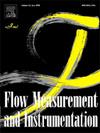Design of bypass structure and dynamic motion simulation for ultra-large diameter pipeline inspection gauge
IF 2.3
3区 工程技术
Q2 ENGINEERING, MECHANICAL
引用次数: 0
Abstract
Aiming at the problem of controlling the operating velocity of a large-diameter heavy-duty pipeline inspection gauge (PIG), this paper designs the bypass structure to study the velocity change and flow field state when the Ø1219 mm PIG is operating in pipeline with different bypass rates. Fluent is applied to numerical simulation of the fluid-structure interaction flow field based on the dynamic mesh method. The results show that: the bypass rate of 2%–3% can satisfy the velocity of PIG in 3–5 m/s reasonable interval. The larger the bypass rate is, the larger the turbulence intensity is, and the gradual increase of the pressure difference suffered by the PIG. The operating velocity of the PIG can be regulated more accurately by corresponding to the bypass rate and the pressure difference front and rear. Comparing the experimental and simulation results, the error rate of the velocity decrease with bypass rate of 1%–3% is 12.8 %.
超大直径管道检测仪的旁路结构设计和动态运动模拟
针对大口径重型管道检测仪(PIG)的运行速度控制问题,本文设计了旁通结构,研究了Ø1219 mm的PIG在不同旁通率的管道中运行时的速度变化和流场状态。基于动态网格法,应用 Fluent 对流固耦合流场进行了数值模拟。结果表明:2%-3% 的旁通率可以满足 PIG 速度在 3-5 m/s 的合理区间。旁通率越大,湍流强度越大,PIG 所承受的压差逐渐增大。通过对应旁通率和前后压差,可以更精确地调节 PIG 的运行速度。对比实验和模拟结果,旁通率为 1%-3%时速度下降的误差率为 12.8%。
本文章由计算机程序翻译,如有差异,请以英文原文为准。
求助全文
约1分钟内获得全文
求助全文
来源期刊

Flow Measurement and Instrumentation
工程技术-工程:机械
CiteScore
4.30
自引率
13.60%
发文量
123
审稿时长
6 months
期刊介绍:
Flow Measurement and Instrumentation is dedicated to disseminating the latest research results on all aspects of flow measurement, in both closed conduits and open channels. The design of flow measurement systems involves a wide variety of multidisciplinary activities including modelling the flow sensor, the fluid flow and the sensor/fluid interactions through the use of computation techniques; the development of advanced transducer systems and their associated signal processing and the laboratory and field assessment of the overall system under ideal and disturbed conditions.
FMI is the essential forum for critical information exchange, and contributions are particularly encouraged in the following areas of interest:
Modelling: the application of mathematical and computational modelling to the interaction of fluid dynamics with flowmeters, including flowmeter behaviour, improved flowmeter design and installation problems. Application of CAD/CAE techniques to flowmeter modelling are eligible.
Design and development: the detailed design of the flowmeter head and/or signal processing aspects of novel flowmeters. Emphasis is given to papers identifying new sensor configurations, multisensor flow measurement systems, non-intrusive flow metering techniques and the application of microelectronic techniques in smart or intelligent systems.
Calibration techniques: including descriptions of new or existing calibration facilities and techniques, calibration data from different flowmeter types, and calibration intercomparison data from different laboratories.
Installation effect data: dealing with the effects of non-ideal flow conditions on flowmeters. Papers combining a theoretical understanding of flowmeter behaviour with experimental work are particularly welcome.
 求助内容:
求助内容: 应助结果提醒方式:
应助结果提醒方式:


